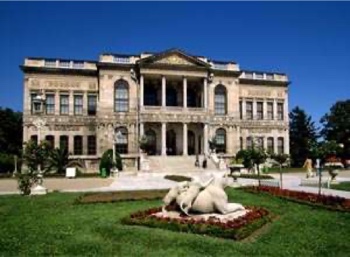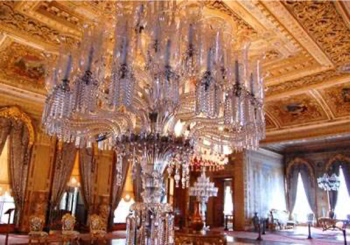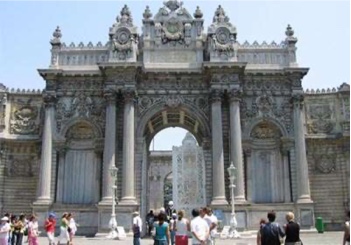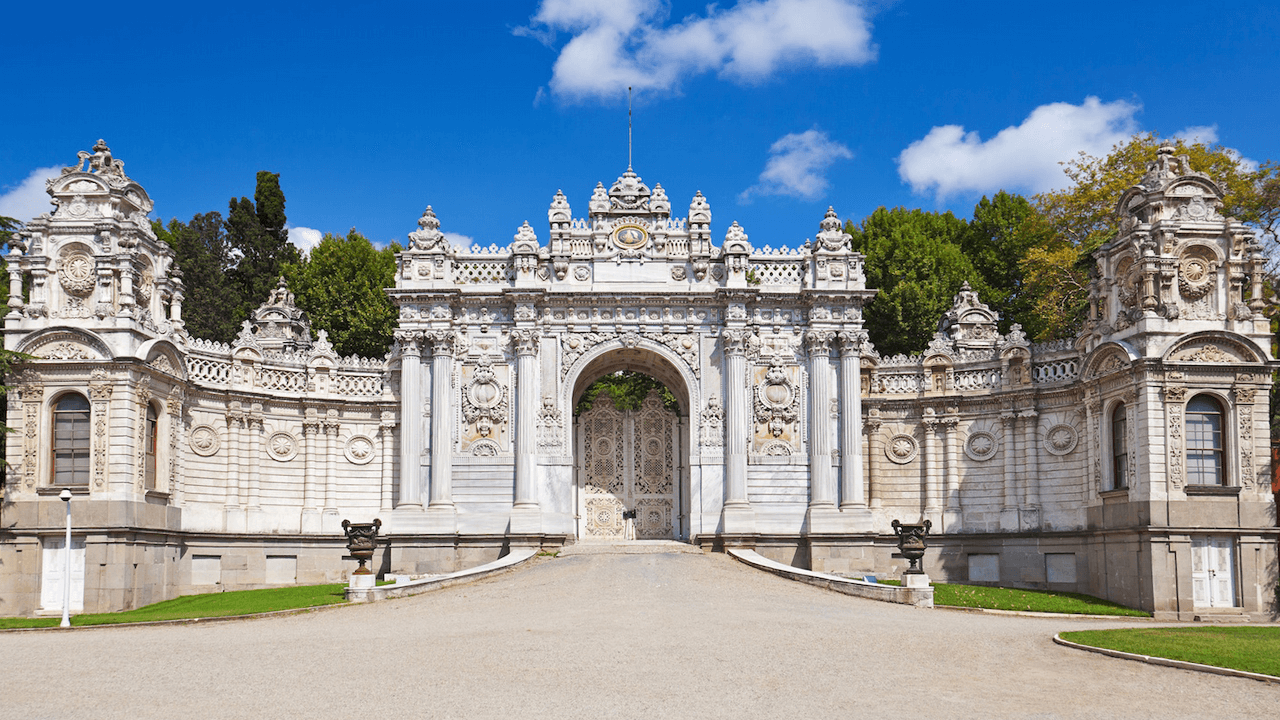Dolmabahce Palace, built in the IXX century is one of the world’s most glamorous palaces. It was the administrative center of the Empire’s last years and the residence of the Ottoman sultans from 1856 until 1924 when, once instituted the new Turkish Republic, Caliphate was abolished.
 Mustafa Kemal Ataturk transferred all government functions to the young capital Ankara, but in his visits to Istanbul he used to occupy a room in the Dolmabahce Palace and received guests, taught lectures and held press conferences. Atatürk spent the last days of his medical treatment in this palace, where he died on November 10, 1938.
Mustafa Kemal Ataturk transferred all government functions to the young capital Ankara, but in his visits to Istanbul he used to occupy a room in the Dolmabahce Palace and received guests, taught lectures and held press conferences. Atatürk spent the last days of his medical treatment in this palace, where he died on November 10, 1938.
History
Where is now Dolmabahce Palace, there was a small bay in Bosphorus, filled gradually during the eighteenth century (hence the name: dolma meaning “filled” and bahce “garden”) to serve imperial gardens, the favorite of the Ottoman monarchy. Various summer palaces were built here, until finally Dolmabahce was ready and the Sultan decided to move there with his court to enjoy the new and modern luxuries that Topkapi was lacking of.
Dolmabahce Palace was commissioned by the 31st Sultan of the Empire, Abdulmecid I, and built between 1843 and 1856. The construction costed five million Ottoman gold coins, the equivalent of 35 tons of gold. To gild the ceilings of the 45 thousand square meters of the palace, they used 14 tons of gold leaf.
Architecture and Design
The palace consists of three parts: the Mabeyn-i Humayun (or Selamlik, rooms reserved for men), Muayede Salonu (ceremonial hall) and the Harem-i Humayun (the Harem, residential apartments for the family). The palace has an area of 45 thousand square meters and contained 285 rooms, 46 halls, 6 Turkish baths (hamams) and 68 health services. It is the largest palace in Turkey.
The design contains eclectic elements of baroque, rococo and neoclassical styles, blended with traditional Ottoman architecture to create a new synthesis. The palace’s design and décor reflect the increasing influence of European styles and standards on late Ottoman culture and art. Functionally, however, it retains elements of traditional life of Ottoman palaces and also features of traditional Turkish houses.
The largest Bohemian crystal chandelier in the world is in the Hall of Ceremonies (Muayede Salonu) of Dolmabahce, a gift from Queen Victoria, with 750 lamps and 4.5 tonnes. Dolmabahce also has the world largest collection of crystal chandeliers from Bohemia and Baccarat, wearing them even in its main staircase with Baccarat balusters.
Visiting Dolmabahçe
The visit to the palace goes through its four main parts: the Selamlik, the Harem, the Clock Museum and the Glass Pavilion. The most important parts are the first two: where you can see the mentioned works in Baccara and Bohemian glass, the lamp, the throne room and the harem, where it developed the privacy of the sultans.
Dolmabahce visits are guided, so that will be in groups, in Turkish and usually in English, but there are brochures in other languages.
Our approach
Dolmabahce Palace is a lovely, pure luxury and wealthy with a touch of modernity, unique artworks in the world and gold layers on the roof. Visitors will be astonished as well with the amazing architecture and the obvious European influence over the Ottoman sultans. However, this is not one of the most visited sites for tourists, that usually prefers Topkapi, close to other major attractions and more accessible by public transport. If you have free time and has seen other famous places of the city, we suggest you to visit Dolmabahce, which we know will be a dazzling experience.
Location
Dolmabahce Caddesi. Besiktas.
Open hours
Tuesdays to Sundays, from 8:30 to 16:00 (in winter until 15:00). Closes on Mondays.
Price
Adults: 40 TL
Students: 5 lira.
Transportation
Tram: To Kabataş, T1 Line. Then walk to the Palace.
Nearby Places
Taksim Square (1.3 km)
Galata Tower (2.7 km)
Topkapi Palace (3.2 km)
Gülhane Park (3.3 km)



